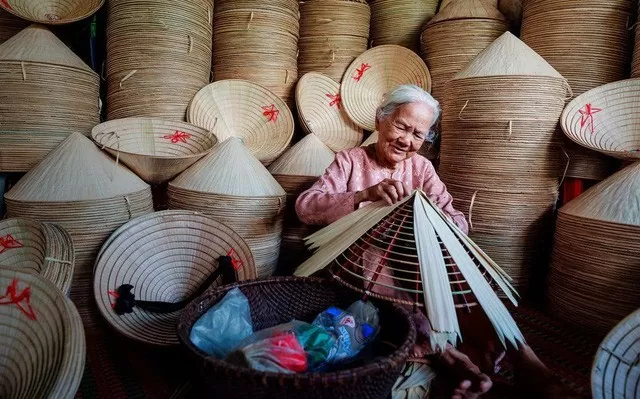
Craft villages contribute tens of trillions of dong to Hanoi’s economy
Latest
 |
| Illustrative image. |
Currently, Hanoi has 1,350 craft villages, among which 331 are officially recognised for their traditional crafts by the municipal's People's Committee. The locality houses 47 out of the nation's total 52 traditional crafts. The annual production value of the city's craft villages now exceeds 24 trillion VND (948 million USD at current exchange rate).
After nearly six years of implementing the OCOP programme, Hanoi has accredited 2,711 products, including six five-star products, 12 potential five-star products, 1,473 four-star products, and 1,220 three-star products.
Hanoi’s traditional craft villages attract both domestic and international tourists due to their longstanding cultural values and creativity of artisans and craftsmen through their products such as Phu Vinh, Chuong My bamboo and rattan weaving products, Chuong village’s conical hat, Ha Thai’s lacquerware, Quat Dong’s embroidery, Tay Tu’s flowers, Van Phuc silk, and Bat Trang ceramics, among others.
Minister of Agriculture and Rural Development Le Minh Hoan said Hanoi is on the right track in leveraging its cultural values and local strengths to develop OCOP products. The promotion and branding of OCOP products through events and festivals are becoming increasingly professional and intriguing.
The minister highlighted that OCOP products have contributed to stimulating rural economic development while creating high-value-added products.
Artisan Ta Thu Huong from the Chuong conical hat craft village in Thanh Oai district shared that Chuong conical hats not only embody traditional beauty but also provide a vital source of income for over 4,000 local households. With the craft's growth, Chuong village has become a major supplier of various traditional hats.
Notably, Chuong village has established a collective trademark for Chuong conical hats registered by the Intellectual Property Office. The village has set up links with businesses for distribution, export, and market expansion, including markets such as Japan, the Republic of Korea, China’s Taiwan, Thailand, France, the USA and Australia, among others. Chuong conical hats are highly regarded for their quality, design, price, and service by international customers.
The unique "lotus silk fabric," crafted by artisan Phan Thi Thuan in Phung Xa commune, My Duc district, has been recognised as a potential 5-star product. This product has been used as official gifts by the Government Office for foreign diplomats.
Hanoi is also proud of its Bat Trang ceramics which have been successfully marketed internationally due to their excellent quality and high artistic values. Bat Trang ceramics have conquered demanding markets such as Japan, the US, Germany, the UK, France, and Spain, among others.
However, alongside these achievements, craft villages still face numerous challenges and obstacles as many craft villages operate on a small scale with outdated production equipment and limited management capacities. Some craft products lack of competitiveness, and their growth does not always correspond to the city's potential and advantages.
Most production activities in craft villages are seasonal, heavily relying on raw materials sourced from various provinces and cities, leading to high costs in securing inputs, meanwhile, policies supporting the development of raw material supply chains across provinces and cities are insufficient, directly affecting production and business plans, especially in export-oriented crafts.
Moreover, certain policies do not align with practical needs, posing limitations during implementation while accessing preferential funding and loans from commercial banks remains difficult, hindering the improvement of product packaging and branding in craft villages.
To elevate the value of indigenous cultural heritage through OCOP products, it is necessary for the capital city to issue policies to foster craft village development, particularly focusing on vocational training, skills transmission, technology innovation, and infrastructure improvements in craft villages. These efforts are crucial in transforming craft villages into attractive tourist destinations, aligning with the city's current and future directions in experiential tourism, ecotourism, and agricultural tourism.

























